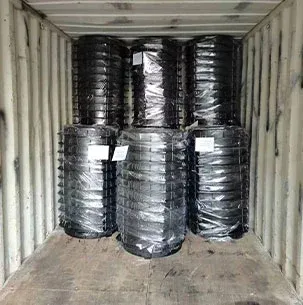clamp for copper pipe leak
Understanding Clamps for Copper Pipe Leaks
Copper pipes are widely used in residential and commercial plumbing systems due to their durability and resistance to corrosion. However, like any plumbing material, they can develop leaks over time due to various factors such as aging, material fatigue, and high water pressure. When a leak occurs, it is crucial to address it promptly to prevent water damage and maintain the integrity of the plumbing system. One effective solution for temporarily sealing leaks in copper pipes is the use of clamps.
What is a Pipe Clamp?
A pipe clamp is a simple yet effective tool designed to secure and seal pipes. Clamps can be made from various materials, including stainless steel, plastic, or rubber, and they come in a variety of sizes to fit different pipe diameters. When it comes to copper pipes, stainless steel clamps are often preferred due to their strength, durability, and resistance to corrosion, making them suitable for use in wet environments.
Types of Pipe Clamps
There are several types of clamps available for repairing leaks in copper pipes
1. Screw Clamps These are adjustable clamps that can be tightened around the pipe using screws. They are easy to install and can provide a strong seal for small leaks.
2. Rubber Padded Clamps These clamps feature rubber pads that help cushion the pipe while providing a secure grip. They are ideal for preventing further damage to the pipe and minimizing vibrations.
3. Repair Clamps Specifically designed for leak repair, these clamps come with a rubber gasket that fits around the damaged area. They are typically secured with bolts, providing a strong, watertight seal.
4. Pipe Couplings For more extensive damage, a pipe coupling can be used. This fitting replaces the damaged section of the pipe and is secured in place with clamps.
How to Use a Clamp for Copper Pipe Leaks
Using a clamp to fix a leak in a copper pipe is a relatively straightforward process
clamp for copper pipe leak

1. Identify the Leak First, locate the source of the leak. This may involve examining the pipe closely for signs of water seepage or corrosion.
2. Turn Off the Water Supply Before any repairs can be made, ensure that the water supply to the affected area is turned off. This will prevent further water flow and allow for a dry working environment.
3. Dry the Pipe Use a towel or cloth to dry the area around the leak thoroughly. A dry surface is essential for the clamp to create a proper seal.
4. Choose the Right Clamp Select an appropriate clamp based on the size of the pipe and the nature of the leak. For small leaks, a screw clamp or rubber padded clamp may suffice, while larger leaks may require a repair clamp.
5. Position the Clamp Place the clamp over the leak, ensuring it covers the damaged area adequately.
6. Secure the Clamp Tighten the clamp according to the manufacturer’s instructions. Be careful not to overtighten, as this can cause additional damage to the pipe.
7. Check for Leaks After installation, gradually turn on the water supply and check for any signs of leakage. If water seeps through, the clamp may need further adjustment.
When to Seek Professional Help
While clamps are an excellent temporary solution for copper pipe leaks, they are not a permanent fix. If the leak is extensive, or if you are unsure about repairing it yourself, it is advisable to contact a professional plumber. Additionally, recurring leaks may indicate underlying issues in your plumbing system that need to be addressed.
Conclusion
Clamps for copper pipe leaks represent a practical and effective solution for temporary repairs. They provide an immediate response to leaks, minimizing water damage and giving homeowners time to consider long-term repairs. Understanding the different types of clamps and how to use them correctly can empower you to tackle minor plumbing issues, ultimately ensuring the continued efficiency and safety of your plumbing system. However, always remember that for significant repairs or persistent issues, consulting a professional is the best course of action to ensure a reliable and long-lasting repair.
-
The Smarter Choice for Pedestrian AreasNewsJun.30,2025
-
The Gold Standard in Round Drain CoversNewsJun.30,2025
-
The Gold Standard in Manhole Cover SystemsNewsJun.30,2025
-
Superior Drainage Solutions with Premium Gully GratesNewsJun.30,2025
-
Superior Drainage Solutions for Global InfrastructureNewsJun.30,2025
-
Square Manhole Solutions for Modern InfrastructureNewsJun.30,2025
-
Premium Manhole Covers for Modern InfrastructureNewsJun.30,2025
